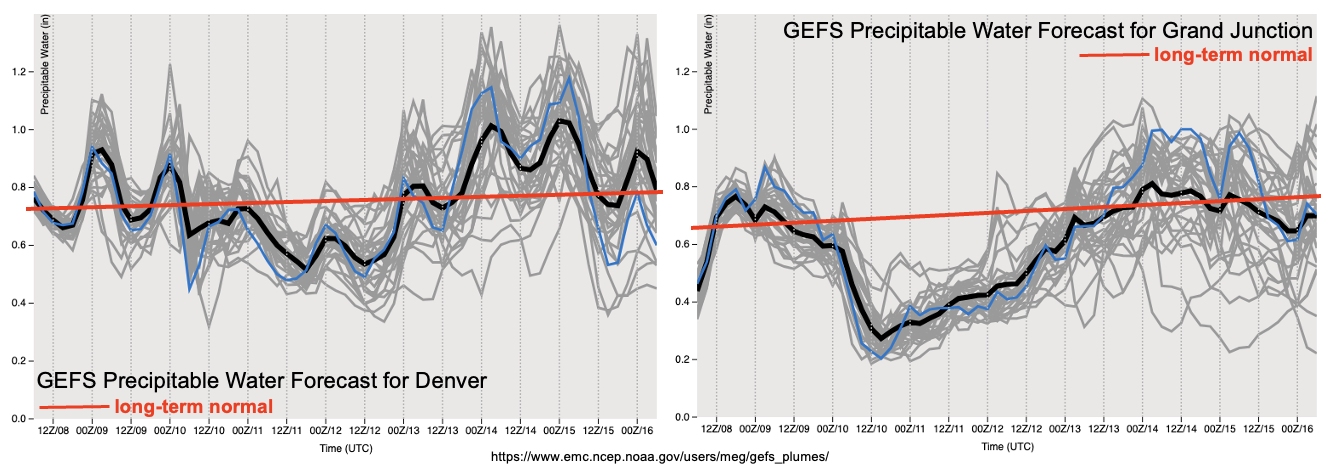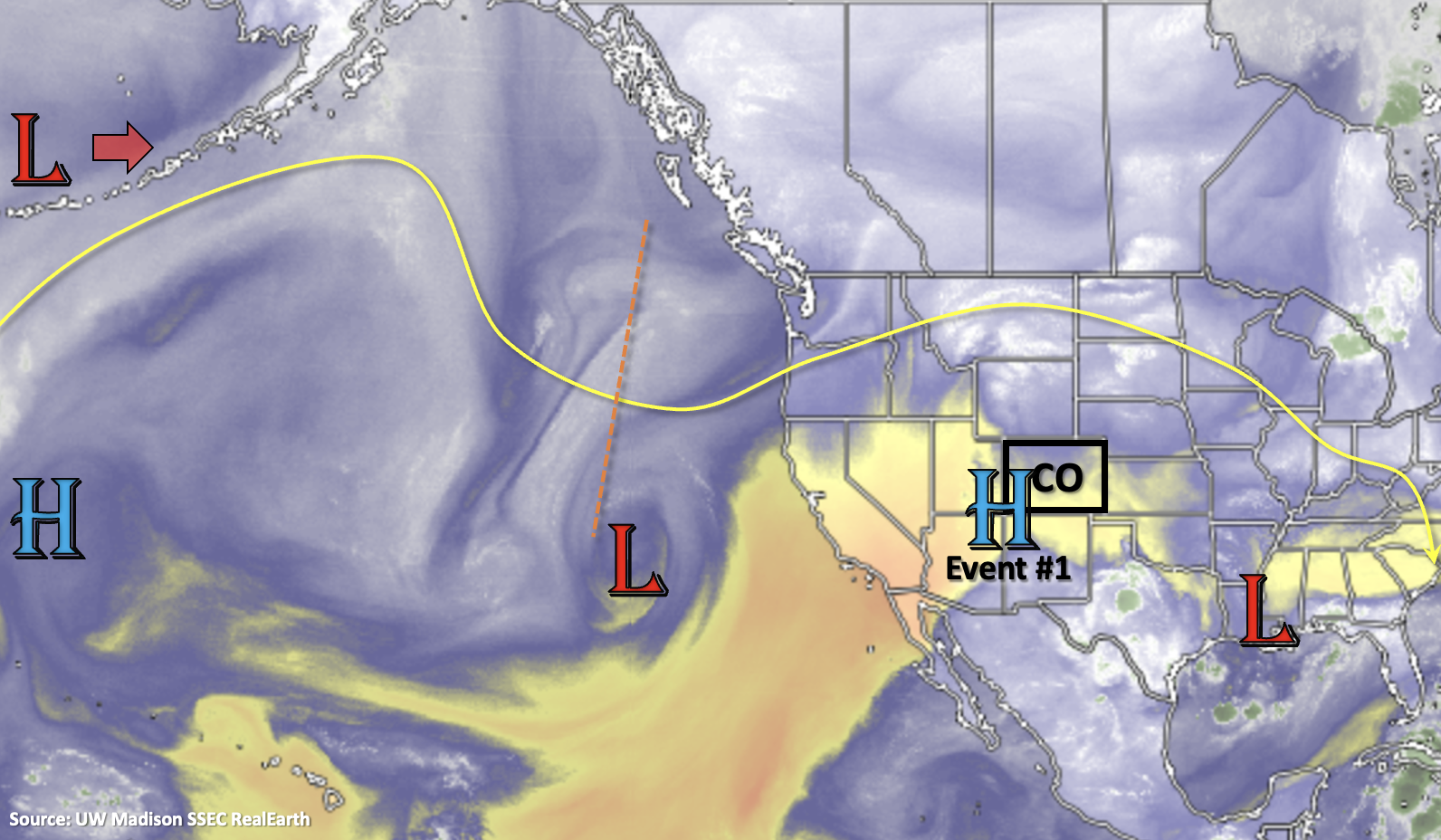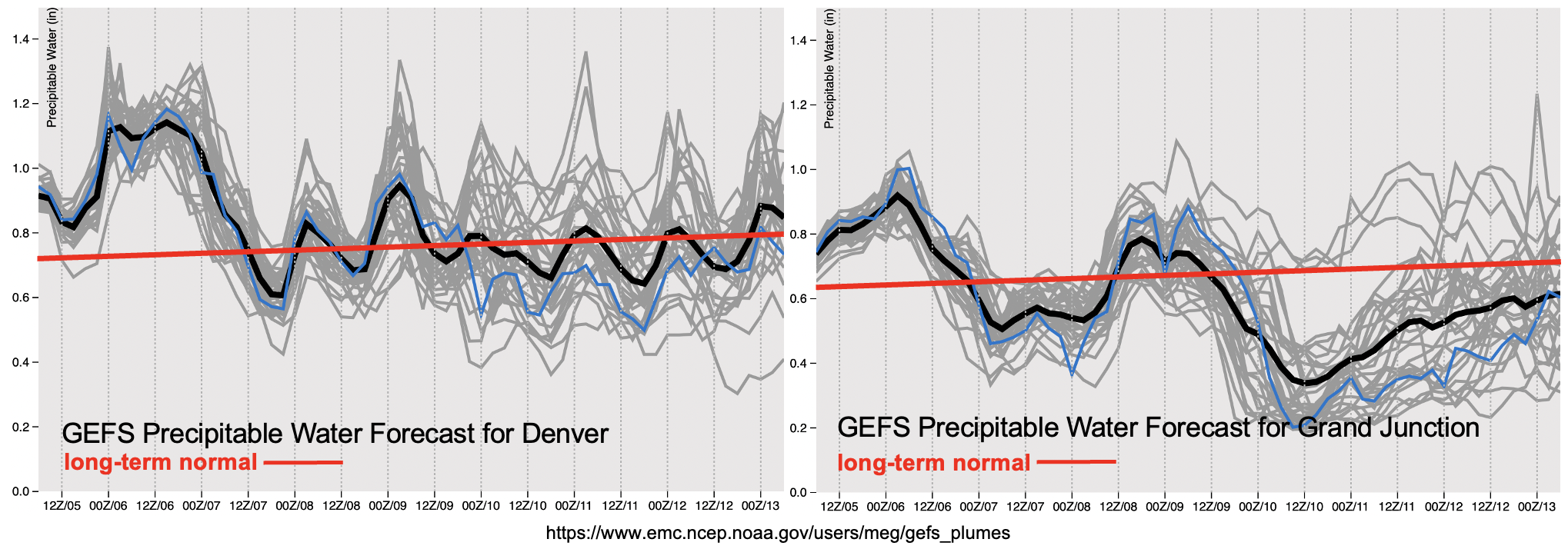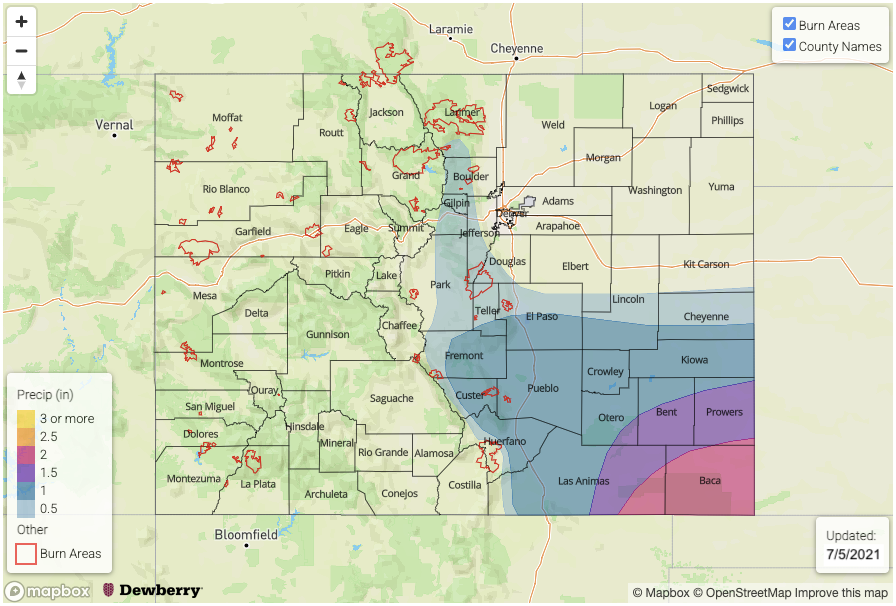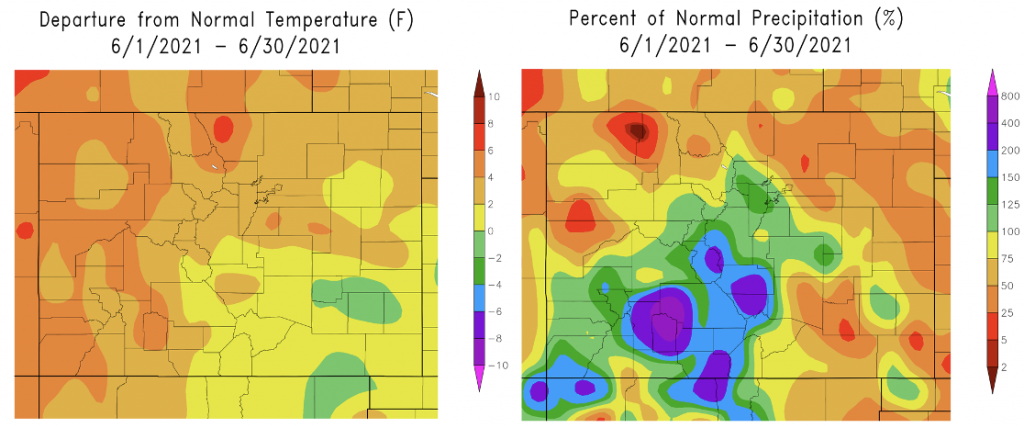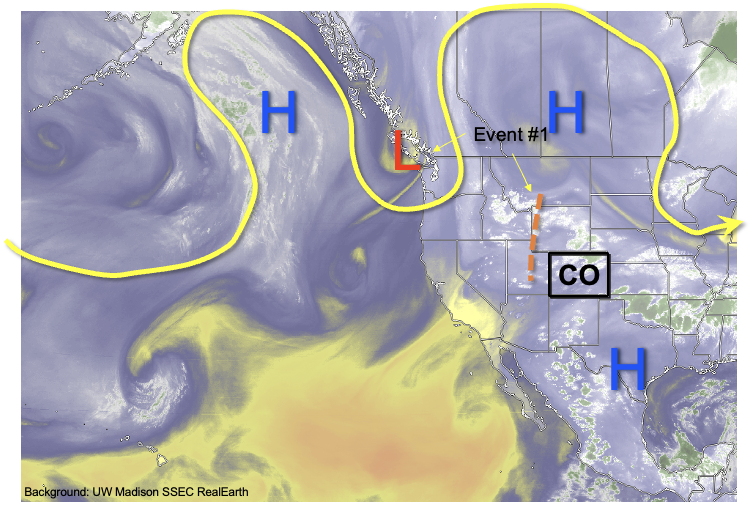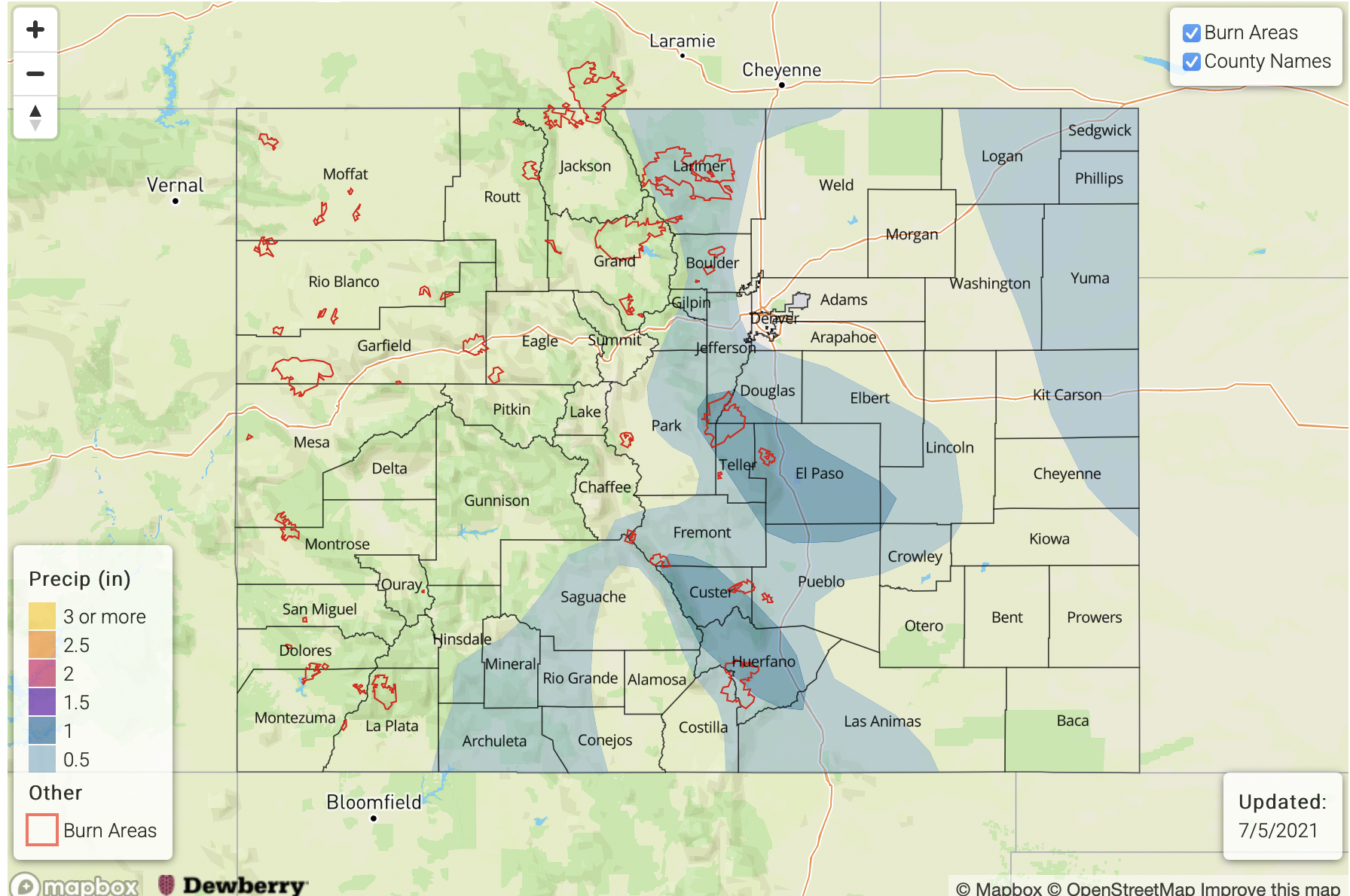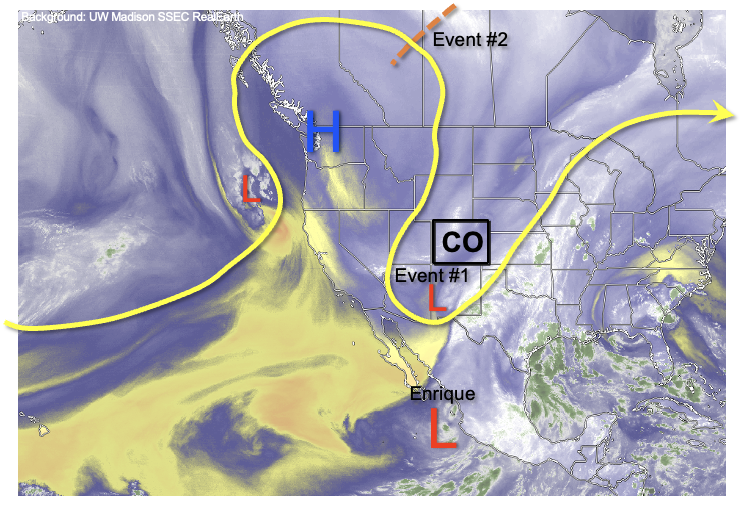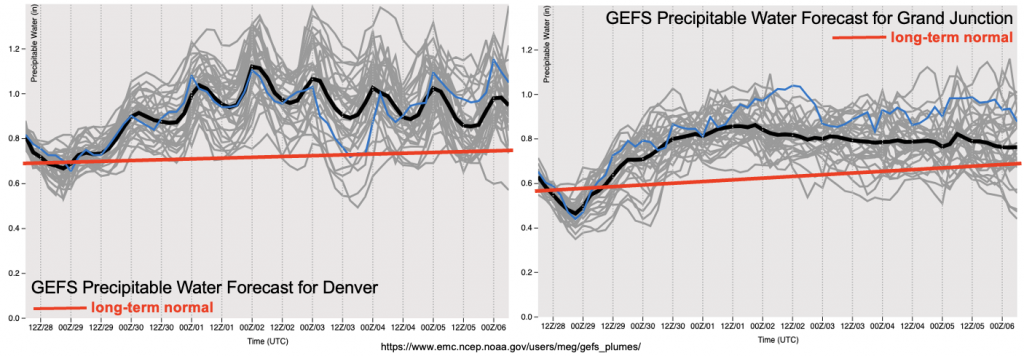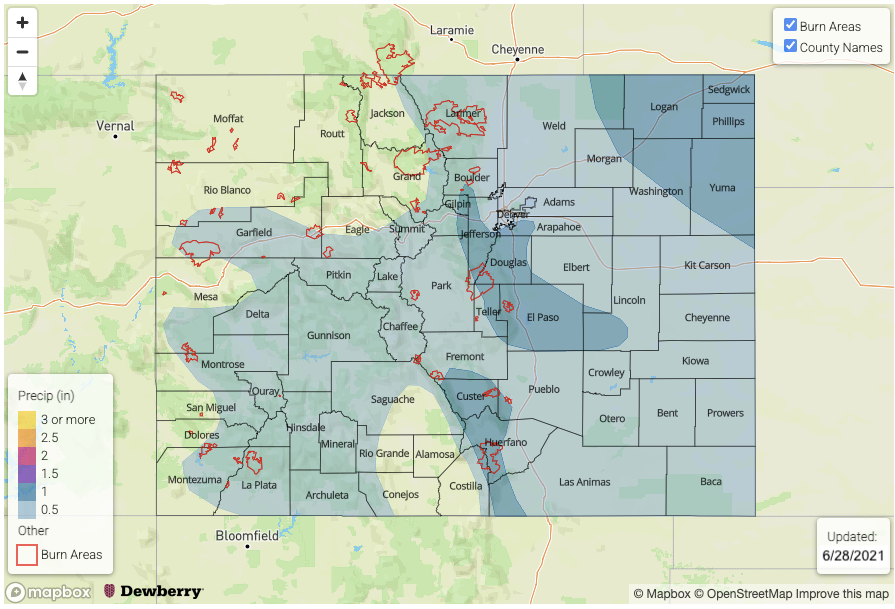Issue Date: Thursday, July 8th, 2021
Issue Time: 1PM MDT
Valid Dates: 7/9-7/23
As shown in the water vapor image, below, the near record heat Colorado is experiencing today will fortunately only last another 24 hours or so as a pair of disturbances drive a strong cool front across the state on Saturday. That’s the good news. Unfortunately, only the eastern half of the state will experience much of a cooldown. West of the Continental Divide, temperatures of 10F or more above normal are expected to persist over the next 3-5 days. The culprit bringing the heat is an upper-level ridge located just west of the Four Corners this morning. This ridge will strengthen and shift west, while a trough develops over the central United States through the weekend. The cool front passage is expected to be rather uneventful as instability will be limited due to the overnight timing of the cool front. However, moisture will stay at or above normal for eastern and southern Colorado through next week, which will support at least widely scattered storms over mainly the central and southern high terrain (Event #1). Flooding is NOT expected with this event due to the limited instability.
Another cool front is expected to move across Colorado early next week, this time further south. This can be seen with the notable increase in PW in both the Grand Junction and Denver forecasts, below. This, combined with some indication of weak monsoonal southerly flow over New Mexico supports a Low-end Elevated flood threat for this event (Event #2). The best precipitation chances will again be over southern and central Colorado, in consistency with climatology. Further east, the presence of strong upper-level winds suggests strong steering flow, limiting precipitation over a given point. However, with enough instability present, this could support more organized severe weather, although this looks unlikely at the moment.
After Event #2, all indications point to a return to above normal temperatures for most of the state as an upper-level ridge redevelops over the central Rocky Mountains. Thus, there is no additional precipitation events expected at this time.
Switching topics, with it being early July, all the state’s major river basins have very likely experienced their peak flows of the 2021 Water Year. The table below summarizes the peak flow relative to the long-term average. Note that these estimates are preliminary and do not fully take into account the impact of diversions and reservoirs. Three of the five basins experienced significantly below normal flow. But, as has been widely reported on, the Colorado River saw the most drastic anomaly of almost 60% below normal. The Rio Grande flow was arguably the most unexpected as the area was in the midst of a severe drought during mid-spring that reversed quickly with a few notable precipitation events. The South Platte River also “outperformed” it’s late winter low-flow expectations given a below normal snowpack at that time. Out of all the basins, late spring and early summer precipitation is probably the most important for the South Platte River (climatologically), and this year’s accumulations were significant, ultimately yielding much above normal flow.
Below we describe the identified precipitation events in more detail.
Event #1: Friday – Monday (July 9 – July 12)
No Apparent Flood Threat as widely scattered storms expected mainly over higher terrain
Daily afternoon and evening thunderstorms are expected mainly over the Central Mountains, Southeast Mountains and San Juan Mountains. Max 1-hour precipitation up to 0.5 inches is expected, but only locally given the low storm coverage. A strong cool front could clip the northeast corner of Colorado with showers and thunderstorms late Friday and early Saturday, but with limited instability and very strong steering winds, only light to moderate precipitation is expected.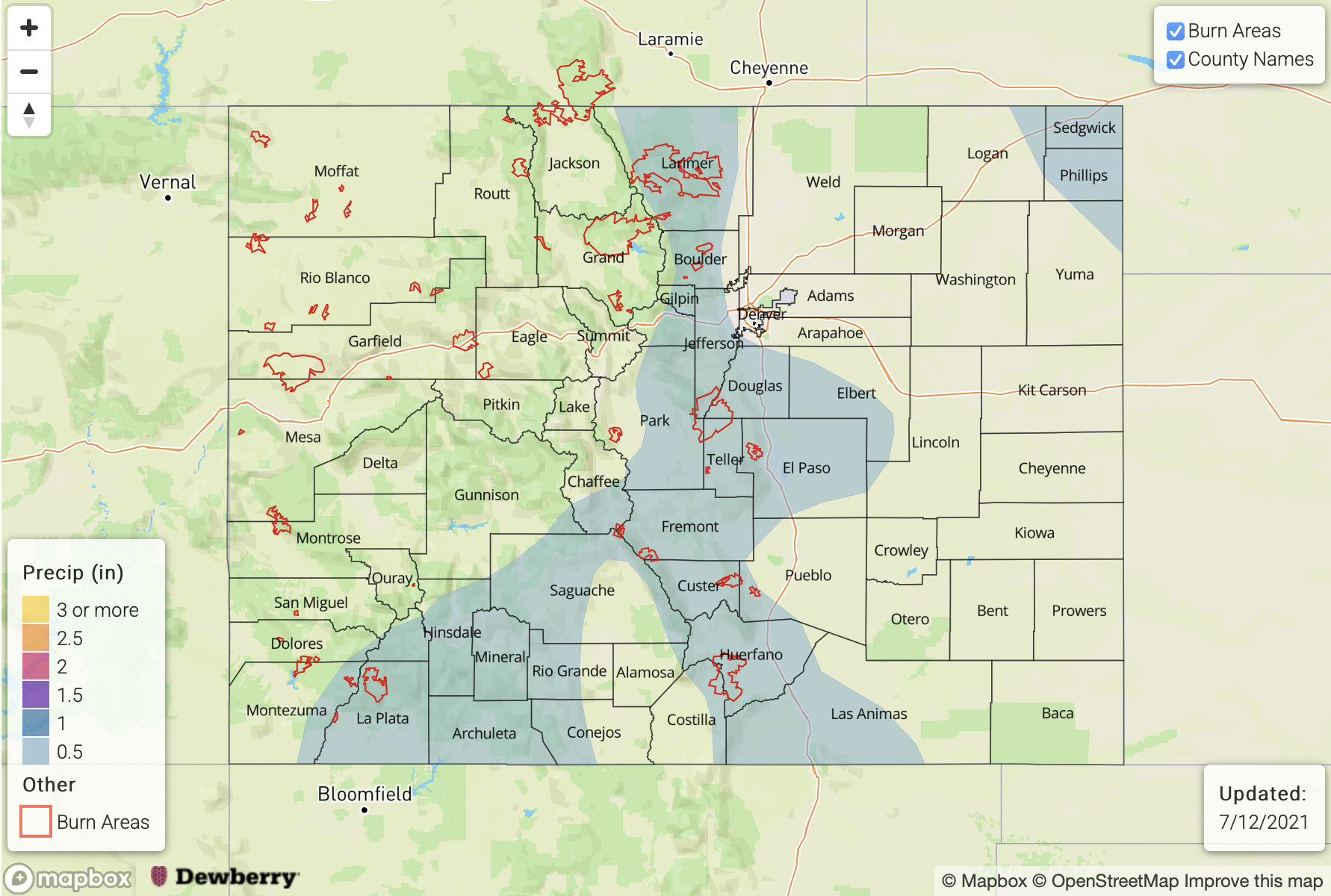
Event #2: Tuesday – Thursday (July 13 – July 15)
Elevated Flood Threat mainly for southern and central high terrain, more uncertainty over eastern Colorado
Another cool front is expected by Tuesday of next week, this time increasing moisture for most of the state. An increase in storm coverage is expected mainly for the higher elevations of the Northern Mountains, Central Mountains, San Juan Mountains and Southeast Mountains. Max 1-hour rainfall up to 0.9 inches will support isolated flash flooding, debris slides and mud flows over the higher terrain Tuesday – Thursday. East of the Continental Divide, there is significant uncertainty as the higher moisture will be offset by relatively weak instability and strong steering flow. However, given sufficient instability, strong to possibly severe thunderstorms could occur in the Front Range, Urban Corridor and Northeast Plains with an elevated flood threat. Stay tuned to the next Outlook for an update on this.



